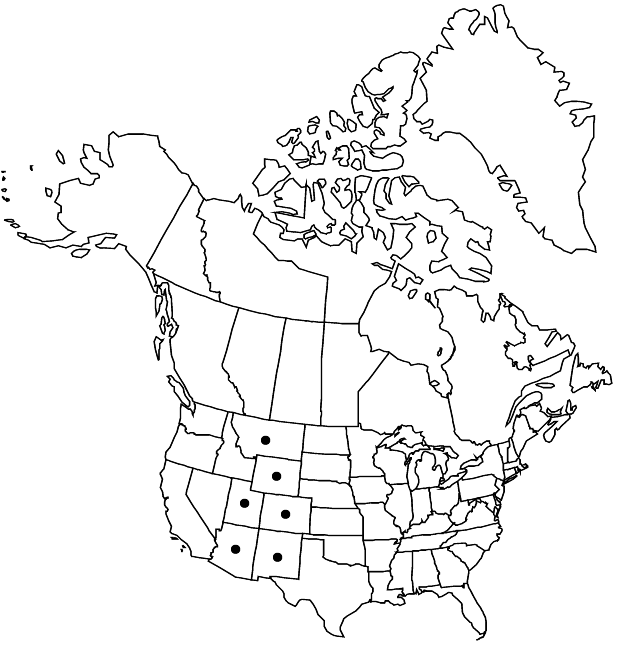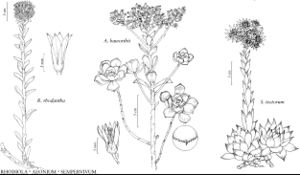Difference between revisions of "Rhodiola rhodantha"
Natl. Cact. Succ. J. 28: 5. 1973 ,.
FNA>Volume Importer |
FNA>Volume Importer |
(No difference)
| |
Revision as of 20:28, 24 September 2019
Plants synoecious. Rootstock erect or decumbent, to 0.5–2 cm diam. Floral stems often persistent, 10–60 × 0.2–0.6 cm. Leaf blades green, not glaucous, linear-oblong to linear-oblanceolate, 1–4.5 × 0.2–0.7 cm, margins entire or few-toothed, apex mostly acute. Inflorescences spikelike or subcapitate, dense, to ca. 50-flowered, 1–3.5 cm diam. Pedicels mostly to 5 mm. Flowers bisexual, mostly 5–6-merous; sepals linear-lanceolate, 3–9 mm; petals nearly erect with tips outcurved, greenish or white to rose, linear-lanceolate to linear-oblanceolate, 6–13 mm, longer than stamens. Follicles 6–9 mm, beaks erect. Seeds short-tailed, oblong, 2 mm. 2n = 14.
Phenology: Flowering summer.
Habitat: Wet meadows, stream banks, rockfields, rock crevices
Elevation: 2000-4200 m
Distribution

Ariz., Colo., Mont., N.Mex., Utah, Wyo.
Discussion
Rhodiola rhodantha is placed in subg. Clementsia; the only other species in this subgenus is R. semenovii (Regel & Herder) Borissava, of Turkestan, with longer, narrower, entire leaves.
Selected References
None.
